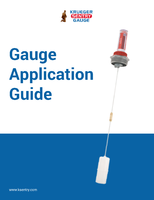ViaLogy PLC Technology Update
Share:
LONDON, March 28 - Two breakthrough technologies are being combined by scientists in California to enable the detection of covert and camouflaged buildings where explosives may be manufactured and stored. The hand-held chemical detection device will also be able to identify dangerous compounds being carried by people.
The US subsidiary of ViaLogy PLC in Altadena, CA, and UT Battelle LLC ("UT Battelle"), of Oak Ridge, TN, have completed an agreement granting exclusive commercialization rights for dual-beam Reverse Photo-Acoustic Spectrometer ("REPAS") technology. UT-Battelle manages Oak Ridge National Laboratory ("ORNL") for the U.S. Department of Energy. Under this patent licensing and commercialization agreement, ViaLogy will capitalize on the synergy between ORNL's breakthrough REPAS technology and ViaLogy's advanced weak signal processing for standoff detection of minute amounts of CBRNE materials.
The REPAS methodology was invented by Dr Thomas Thundat and scientists Dr. Ming Su and Dr. David Hedden. Dr. Thundat, who is a Corporate Fellow and Head of ORNL's Nanoscale Science and Device's Group, has demonstrated the potential to achieve ultra-long range detection of various explosives such as TNT, PETN (one of the explosive materials in Semtex plastic explosives), and RDX, a major component of many plastic bonded explosives used in nuclear weapons. ViaLogy plans to combine its patented weak-signal technology, Quantum Resonance Interferometry (QRI), with REPAS to build a device effective at distances of at least 100 metres.
Long range detection of CBRNE materials is an exceptionally challenging problem and an extremely high priority in the global war on terrorism. Accurate identification of persons and facilities in cluttered urban environments involved in suspected bomb-making activities is critical. The recent increase of terrorists using radio-controlled improvised explosive devices ("IEDs") and vehicle bombs has lead to significant losses in human lives and building damage.
Current state-of-the-art explosive signature detection systems endanger both security personnel and civilians. ViaLogy aims to create a portable or mobile platform-mounted system that can be used to rapidly scan human or building surfaces from a secure distance. Any detected signature will immediately trigger actionable intelligence that can be used to identify, observe, monitor, track suspects, and/or neutralize personnel and facilities at a distance.
"REPAS is a remarkable invention, and we are delighted to partner with ORNL in the commercialization process," said ViaLogy's CEO, Michael Kelly. "Identifying CBRNE and IED assembly facilities from a distance is a technique that has never been properly mastered.
"Dr. Thundat and his team at Oak Ridge have now demonstrated that REPAS can effectively identify unique chemical bonding signatures for explosives. Integration with the powerful QRI algorithm will significantly extend the distance of coverage and enhance the signal-to-background ratio".
Dr. Tom George, ViaLogy's Director for Product Development and Nanofabrication, will be leading the technology integration project. Dr. George previously headed the MEMS Sensors and Technology group at NASA's Jet Propulsion Laboratory.
ViaLogy will be working with manufacturers and system integrators to fast track production, certification and distribution of the ViaLogy REPAS systems.
About ViaLogy: Network Centric Signal Processing.
ViaLogy is a leading innovator of network-centric, real-time signal processing platforms for sensor applications. ViaLogy is currently deploying and designing computational systems, powered by its patented technologies, for applications in life sciences, public safety and security, surveillance, defense and geoseismology. ViaLogy focuses on market driven problems where automation, timeliness, quality and reliability of information processing are essential. ViaLogy's core competency incorporates rapidly and accurately detecting weak signals buried in high noise background and clutter. This technology can be employed to solve problems involving sensor integration and information overload challenges involving video, telephony and control sensors, as well as for enhancement of numerous signal processing applications. For more information, visit our website at www.vialogy.com.
About UT-Batelle, LLC:
A not-for-profit company, known as UT-Battelle, has been established for the sole purpose of managing and operating the Oak Ridge National Laboratory for the U.S. Department of Energy. Formed as a 50-50 limited liability partnership between the University of Tennessee and Battelle, UT-Battelle is the legal entity responsible for leading ORNL as the Laboratory enters the 21st Century.
About ORNL:
ORNL (www.ornl.gov) is a multiprogram science and technology laboratory managed for the U.S. Department of Energy by UT-Battelle, LLC. Scientists and engineers at ORNL conduct basic and applied research and development to create scientific knowledge and technological solutions that strengthen the nation's leadership in key areas of science; increase the availability of clean, abundant energy; restore and protect the environment; and contribute to national security. ORNL also performs other work for the Department of Energy, including isotope production, information management, and technical program management, and provides research and technical assistance to other organizations. The laboratory is a program of DOE's Oak Ridge Field Office.
Source: ViaLogy
CONTACT:
Michael Kelly
CEO - US
+1-626-296-6337
Terry Bond
Chairman - UK & Europe
+44 (0)20 7869 7014
both of ViaLogy
Emma Kane or Samantha Robbins
Redleaf Communications
+44 (0)20 7822 0200
Mark Percy
Seymour Pierce Limited
+44 (0)20 7107 8000
Web site: www.vialogy.com/
http://www.ornl.gov/




